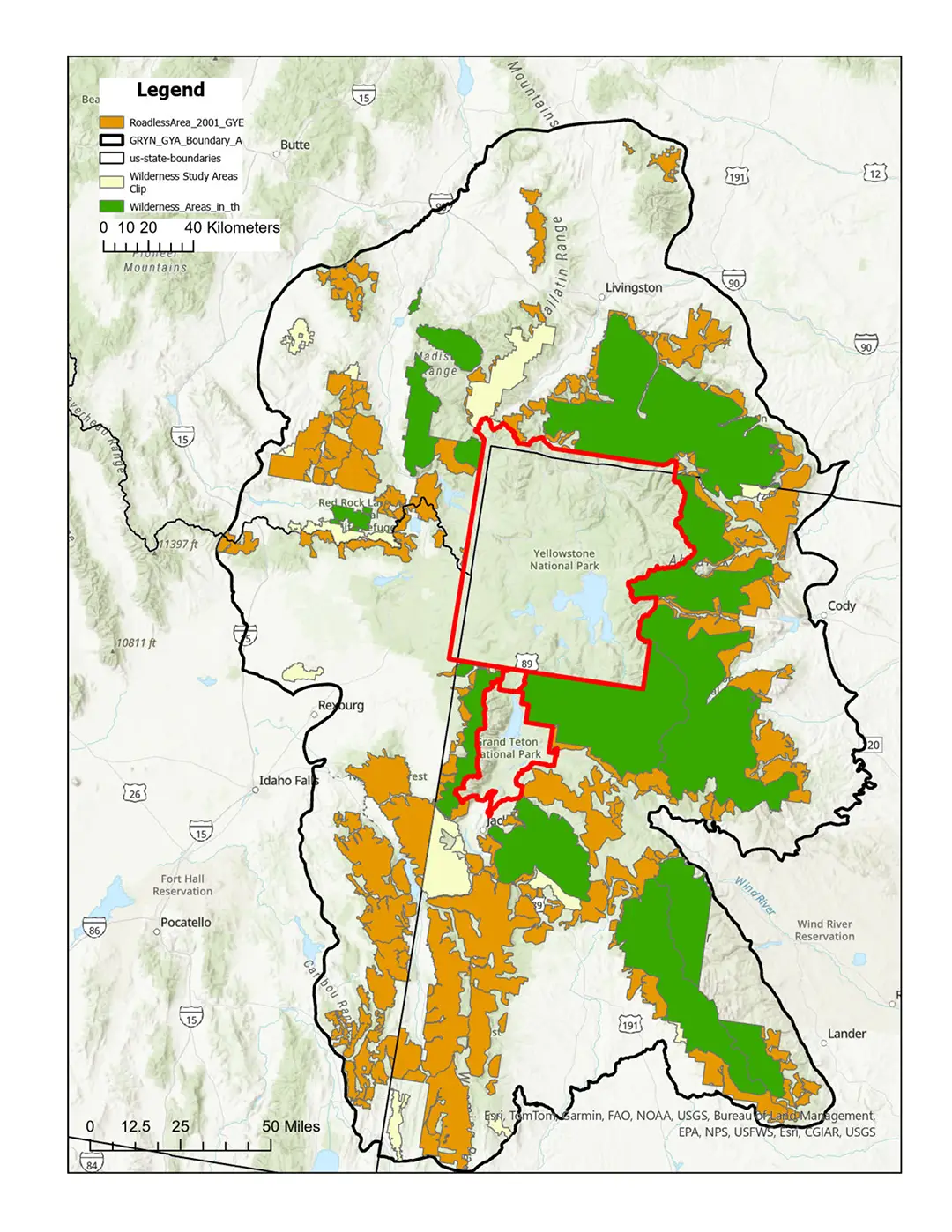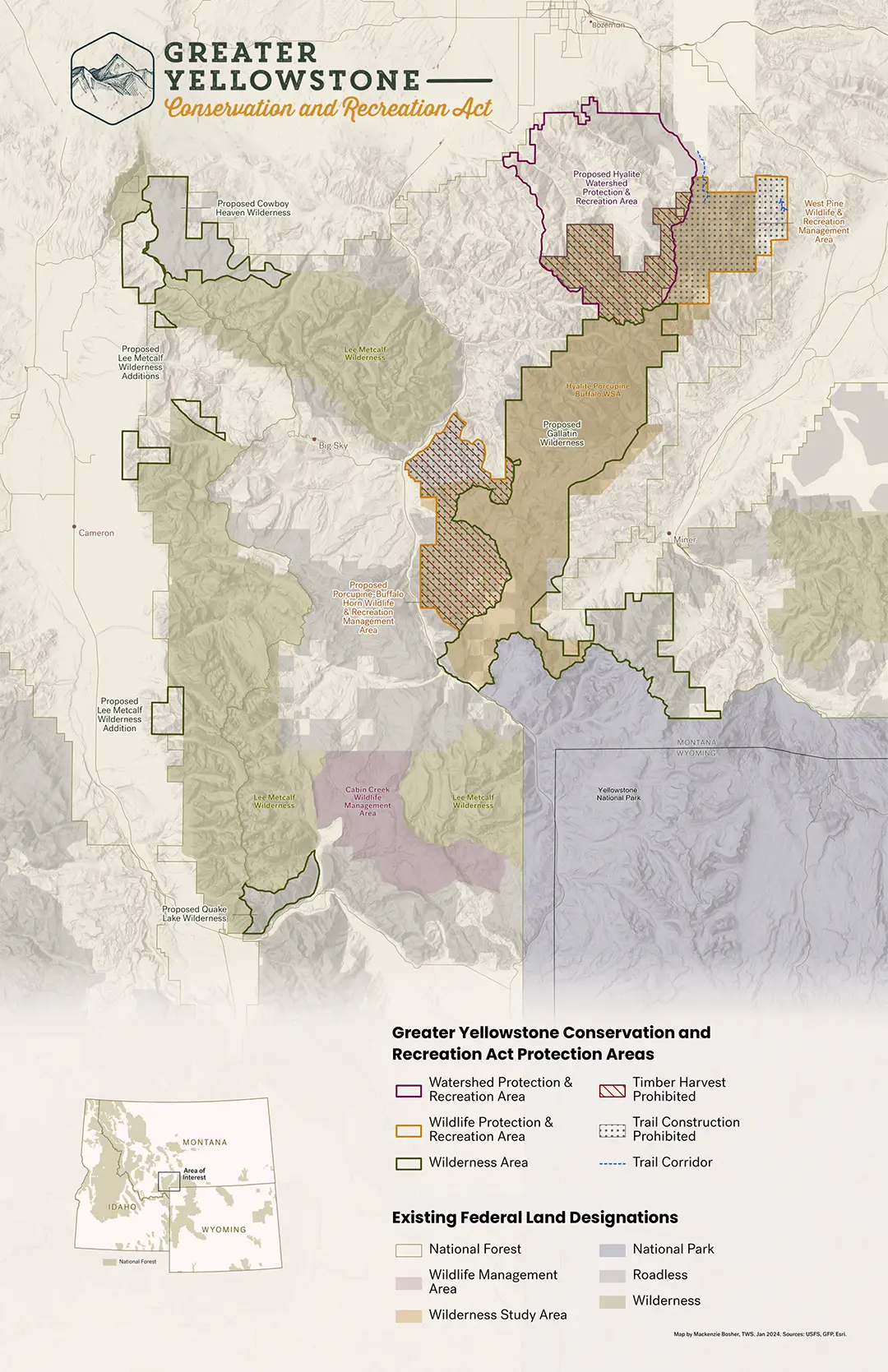WHERE WE STAND
WHAT WE DO
We stand for a Greater Yellowstone Ecosystem, including the Gallatin Range, that is intact and connected:
WHERE WE STAND
WHAT WE DO
We stand for a Greater Yellowstone Ecosystem, including the Gallatin Range, that is intact and connected:
Policies we advocate for:
Within the Custer Gallatin National Forest (see map) Deferment of any change in the legal status of the Hyalite Porcupine Buffalo Horn Wilderness Study area into the future.
WHY:
The current political climate in the US seems to favor multiple use of USFS lands over wilderness protection and thus any act passed by congress is likely to erode current protections that were already compromised in when created.
Continuation of the current management of Inventoried Roadless Areas in the CGNF regardless of the fate of the Roadless Rule under the current administration.
WHY:
Inventoried Roadless areas are extensive in the forest, comprising about 31% of the original Gallatin National Forest.
These areas have largely been maintained in a natural wildland condition and are vital to wildlife and ecological health.
These roadless areas tend to lie at lower elevations that other protected federal lands and are likely more productive and provide high quality wildlife habitat.
The roadless areas tend to radiate out from the core protected lands like spokes from the hub of a wheel and are likely vitally important for wildlife and climate connectivity between Greater Yellowstone and other Greater Ecosystems in the region.


Within the Greater Yellowstone Ecosystem (see map) Maintenance of all the federally protected natural landscapes in the GYE, including national parks, wilderness areas, wilderness study areas, inventoried roadless areas, and fish and wildlife refuges.
Reasons Why based on science:
Large wildlands better maintain native species and healthy ecosystems better than smaller and fragmented ones.
Natural disturbances such as natural fire, avalanches, flooding renew succession in the ecosystem and function best if unimpeded by human structures.
Edge effects from human land uses (such as weeds, pollution, human-caused fires, pet and human displacement of wildlife) extend into wildlands and reduce ecological health and larger wildland areas have more core habitat distant from such edge effects.
Some localized areas serve as climate refugia where plants and animals are less subjected to climate change and larger wildlands are more likely to contain such places.
Within the Greater Yellowstone Ecosystem (see map) Maintenance of all the federally protected natural landscapes in the GYE, including national parks, wilderness areas, wilderness study areas, inventoried roadless areas, and fish and wildlife refuges.
Reasons Why based on science:
Large wildlands better maintain native species and healthy ecosystems better than smaller and fragmented ones.
Natural disturbances such as natural fire, avalanches, flooding renew succession in the ecosystem and function best if unimpeded by human structures.
Edge effects from human land uses (such as weeds, pollution, human-caused fires, pet and human displacement of wildlife) extend into wildlands and reduce ecological health and larger wildland areas have more core habitat distant from such edge effects.
Some localized areas serve as climate refugia where plants and animals are less subjected to climate change and larger wildlands are more likely to contain such places.

Management to retain and restore connecting habitats that lie between federal protected wildlands.
WHY:
Many species migrate across public and private lands of the GYE and these migrations require natural habitats and or lower human infrastructure or pressure.
Coordinated management across the GYE among federal, state, local, and private land managers.
Many species and ecosystem process operate at spatial scales larger than individual jurisdictional boundaries (such as elk migrations) and can best be maintained by coordinated management across the relevant lands.
Gallatin Forest Partnership
Policies we caution against
The Gallatin Forest Partnership (see map)
Why:
The Act removes 40% of the HPBH WSA from potential wilderness status and places it in a status where mechanized and motorized recreation is “grandfathered” in, vegetation management and fuels treatment is permitted, and (in a more limited area) commercial logging is allowed.
Opening up congressional action at this time may risk reducing areas of potential wilderness and increasing areas where logging, road-building, and other multiple uses are permitted.
